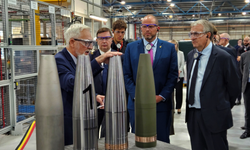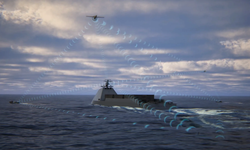A British-led team of engineers has taken a leap forward in the race to harness the stratosphere for earth observation and communications, completing a new series of test flights of BAE Systems’ High Altitude Pseudo Satellite (HAPS) Uncrewed Aerial System (UAS), PHASA-35, in quick succession.
During the first flight at Spaceport America in New Mexico, US, in recent weeks, the solar powered aircraft flew for 24 hours climbing to more than 66,000 feet and cruising in the stratosphere, before successfully landing in a serviceable condition, meaning it was ready to fly again just two days later.
This is a major milestone in the development of PHASA-35, named after its 35-meter wingspan, demonstrating its ability to be launched, flown, landed, potentially reconfigured and then relaunched again so quickly.
Designed by BAE Systems’ subsidiary Prismatic Ltd to operate above the weather and conventional air traffic, PHASA-35, has the potential to provide a persistent and stable platform for uses including ultra-long endurance intelligence, surveillance and reconnaissance.
Bob Davidson, Chief Executive Officer, BAE Systems’ Prismatic: “These latest flight trials are a significant step forward in proving PHASA-35’s capability for operations, and a real moment of pride for our entire team. We’re committed to continuing to develop PHASA-35 at pace to make it available for operational activity as soon as 2026.”
Dave Holmes, Managing Director, FalconWorks at BAE Systems: “These latest trials draw on a huge amount of collaboration between Prismatic, the wider BAE Systems business and industry partners, including Honeywell and the UK Met Office. They demonstrate the credibility and capability of the system for operational use.”











